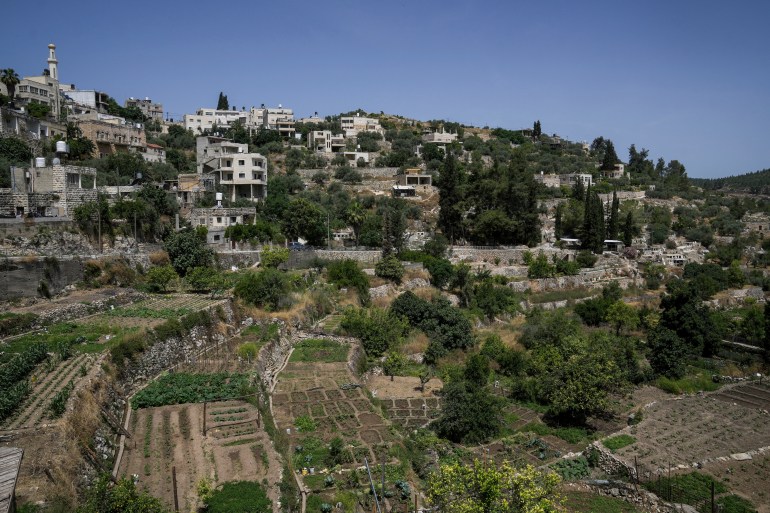The fruits of Palestine and their symbolism
Beyond their simple colours and shapes, these fruits carry the weight of history, shared culture, and loss.
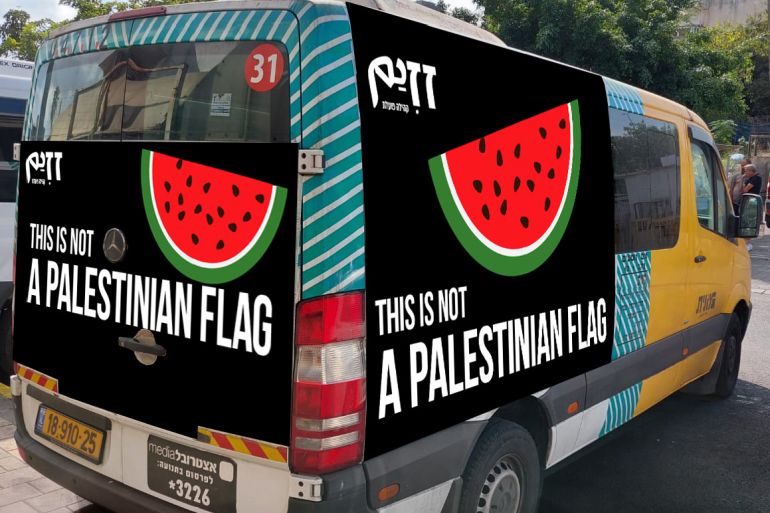
What do watermelons, oranges, olives and eggplants all have in common?
Yes, technically, they are all fruits. Maybe you think they’re all delicious. But for Palestinians, they symbolise Palestinian culture and identity.
Keep reading
list of 3 itemsRamadan recipe: In Sudan, fuul completes the iftar table
Giant meatball from extinct mammoth DNA unveiled by food firm
In protest, agriculture, cuisine and literature, Palestinians use watermelons, oranges, olives and eggplants to represent national identity, connection to the land and resistance.
Watermelons
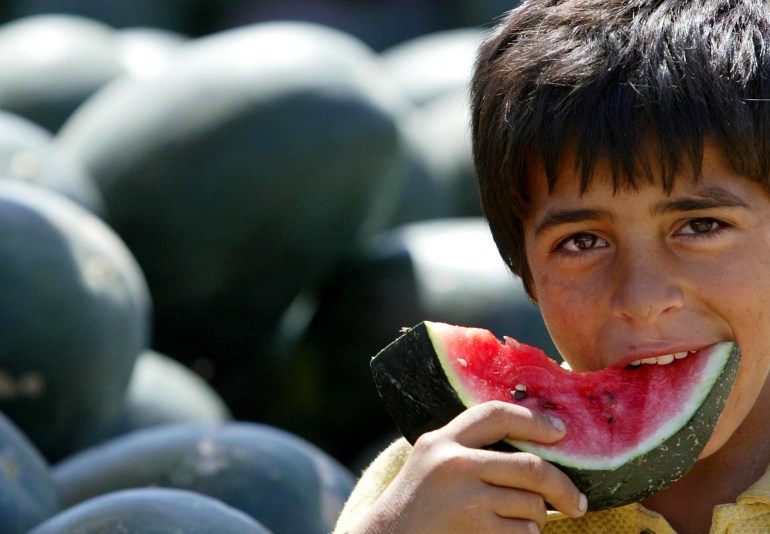
The watermelon is perhaps the most iconic fruit to represent Palestine. Grown across Palestine, from Jenin to Gaza, the fruit shares the same colours as the Palestinian flag – red, green, white and black – so it’s used to protest against Israel’s suppression of Palestinian flags and identity.
Following the 1967 war, when Israel seized control of the West Bank, Gaza Strip and annexed East Jerusalem, the government banned the Palestinian flag in the occupied territory.
Although the flag has not always been banned by law, the watermelon caught on as a symbol of resistance. It appears in art, shirts, graffiti, posters, and of course the ubiquitous watermelon emoji on social media.
Recently, the flag has come under fire again. In January 2023, the far-right National Security Minister Itamar Ben-Gvir instructed police to confiscate Palestinian flags from public places. This was followed in June by a bill to ban the flag in state-funded institutions, which Haaretz reports received preliminary Knesset approval.
In response, Zazim, a grassroots Arab-Israeli peace organisation, placed the Palestinian flag – in watermelon form – on about a dozen Tel Aviv service taxis.
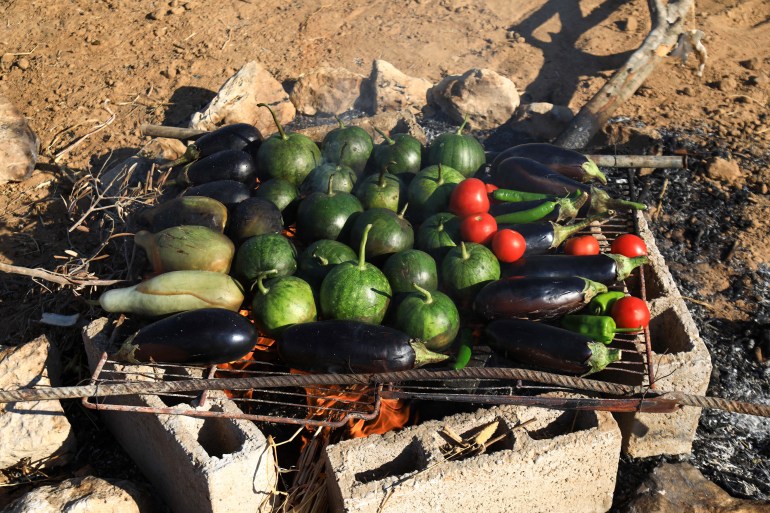
“If you want to stop us, we’ll find another way to express ourselves,” says Amal Saad, a Palestinian from Haifa who organised Zazim’s watermelon campaign.
Saad was unsure whether the right wing would try to stop her, so she kept her planning under the radar. However, Saad said the support she received was overwhelming, with more than 1,300 activists donating to the cause.
Grassroot donations allowed Zazim to keep the watermelons up for two weeks, a week longer than was originally planned, and the campaign has now shifted to distributing watermelon shirts.
Oranges
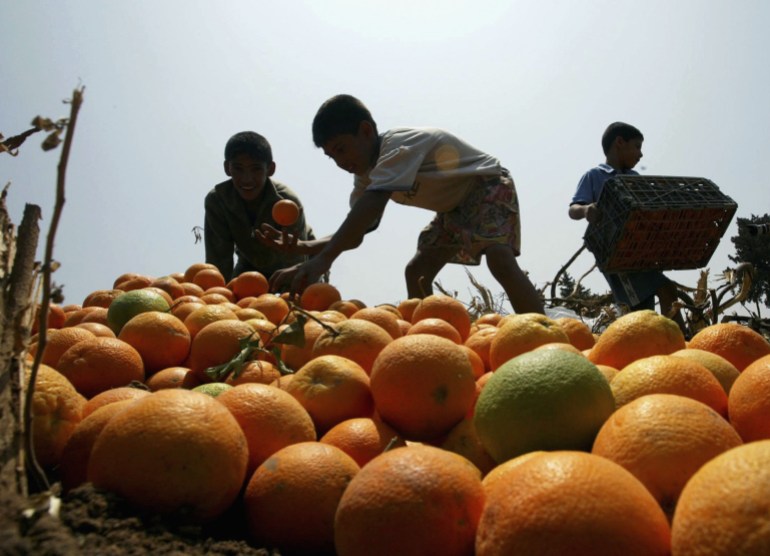
The Jaffa orange, which originated in the 19th century, gained prominence for its sweetness and thick, easy-to-peel skin, which made it well-suited for shipping.
Before the Nakba, or catastrophe, of 1948 when the creation of Israel led to the expulsion of more than 750,000 Palestinians from villages and towns that their ancestors had lived in for centuries, Jaffa oranges were an important export for Palestinian farmers and businessmen.
Because of their prominence, the oranges also became a symbol of national identity in literature and art. Palestinian novelist and journalist Ghassan Kanafani used oranges to symbolise loss in his 1958 short story about the Nakba, called The Land of Sad Oranges.
The story begins with the narrator and his friend, both young boys, observing their family on the eve of the Nakba. The families pack what they can, but they are forced to abandon “the well-tended orange trees that [they] had bought one by one”.
The fact that these trees were carefully nurtured over a long period of time indicates the strong connection between Palestinian farmers and the land, which hundreds of thousands were forced to forsake during the Nakba.
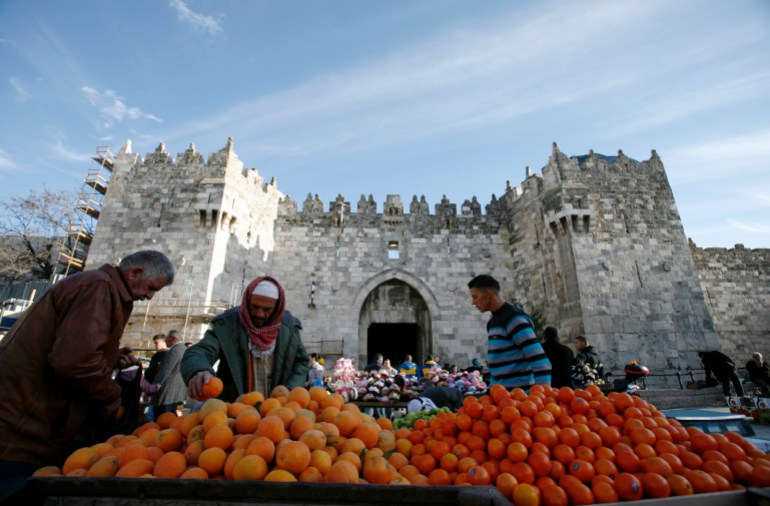
The last contact the narrator has with Palestine before entering Lebanon is a peasant selling oranges along the road. Amid the sound of his family weeping, he picks up a few oranges and brings them into Lebanon – a memento to “all the orange trees that [they] had abandoned to the Jews”.
In Lebanon, life is very hard for the refugees, in particular for his friend’s father. The story ends after the narrator witnesses his friend’s father having a mental breakdown. Next to the crying, shivering grown-up, the narrator “saw at the same moment [a] black revolver … and beside it an orange. The orange was dried up and shrivelled.”
The revolver, a symbol of death, is connected to the shrivelled orange by the narrator’s gaze. Forcibly displaced from the “land of oranges”, the narrator realises the extent of the Palestinian people’s loss.
Olives
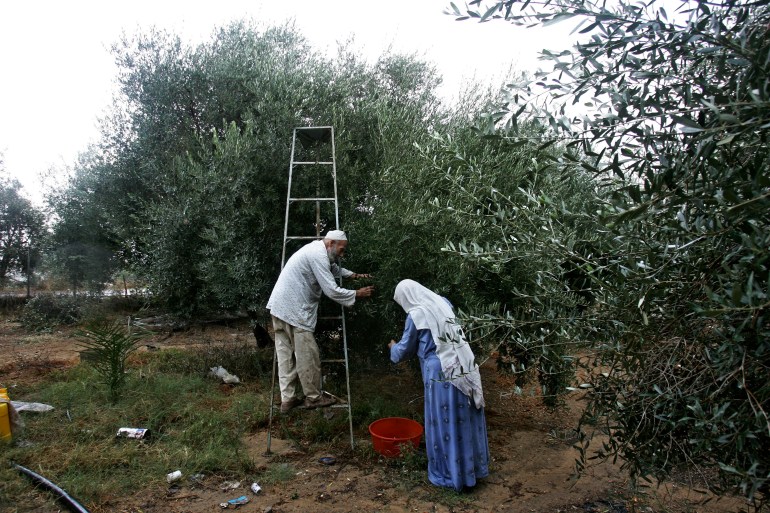
Olive trees can be found across Palestine and are a symbol of resistance. Nour Alhoda Akel, a 23-year-old Palestinian from the Ara valley, believes olive trees are associated with Palestinian identity because, like the orange trees in Kanafani’s story, they represent Palestinians’ deep-rooted connection to their land.
“Olive trees can live for hundreds of years,” says Akel. “So if the tree outside my house is 100 years old, I have an automatic connection with it”, referring to the land on which the tree stands.
Every year during the olive harvest, Akel joins her extended family to pick olives from their grove, a family heirloom.
“The whole family goes out and everyone helps,” says Akel. After a week of picking, they make olive oil and cure the olives, enough to last the family until next year’s harvest.
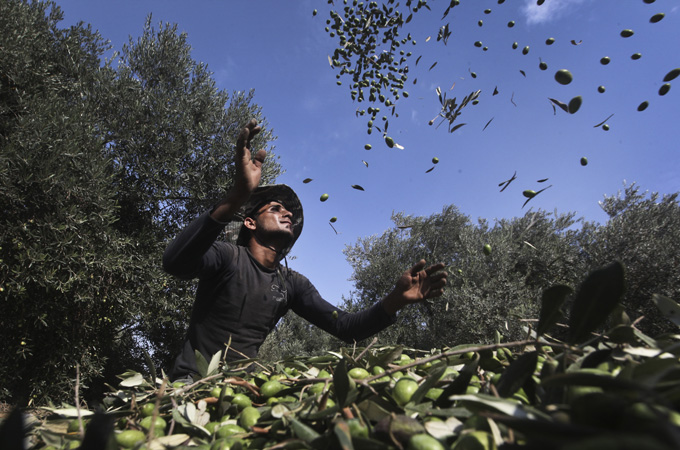
For other Palestinians, the olive harvest is an important source of income. In addition to the oil, which Akel says is an essential ingredient in Palestinian cuisine, olives are used in cosmetics and soap.
In recent years, Palestinian olive trees have come under attack by Israeli settlers in the occupied West Bank. According to the UN, more than 5,000 olive trees belonging to West Bank Palestinians were vandalised in the first five months of 2023.
In previous years, settlers attacked Palestinians during the olive harvest, which normally falls in October and November. On one day alone in October 2021, Al Jazeera reported that settlers uprooted 900 olive and apricot saplings, and stole olive crops in the village of Sebastia, north of Nablus.
Eggplants
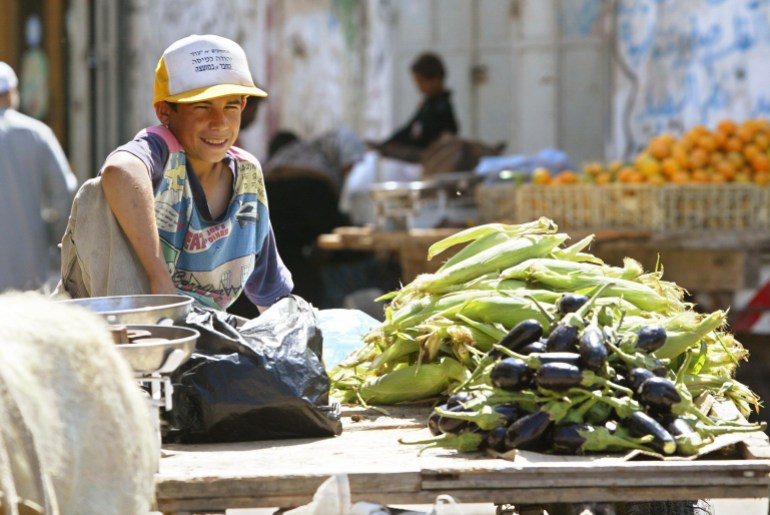
In Edward Said’s photonovel on Palestinian identity, called After the Last Sky, he devotes a few pages to eggplants, in particular those from Battir.
Battir is a UNESCO World Heritage Site known for eggplants. It even periodically hosts an eggplant festival.
For Said, eggplants are a way for him to connect with Palestine despite living in the United States. He lived most of his life as an exile. At the time of writing this book, Said was still a member of the PLO, so Israel barred him from entering his homeland.
Said recounts that his family was particularly attached to the Battiri eggplants.
So much so that even “during the many years since any of us had Battiri eggplants, the seal of approval on good eggplants was ‘They’re almost as good as the Battiris,’” he writes.
